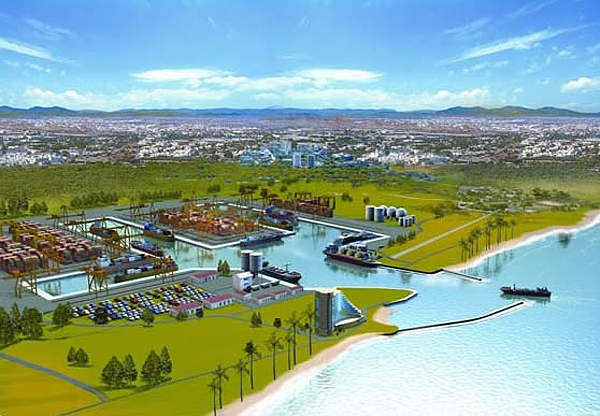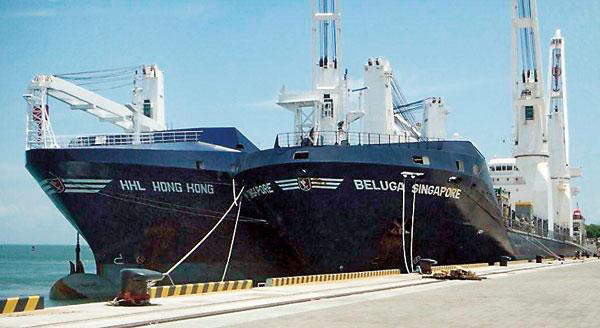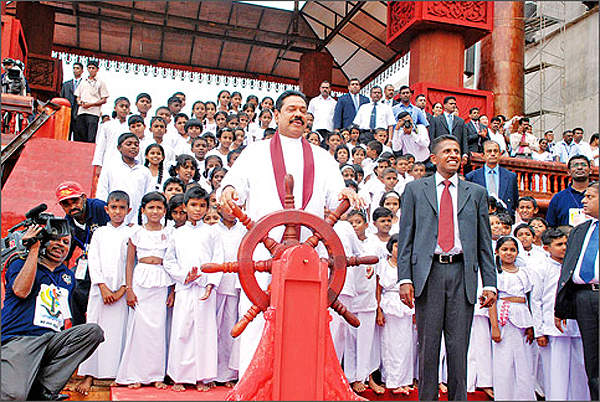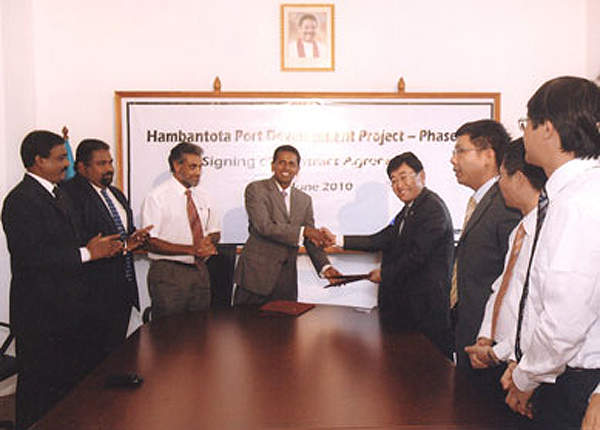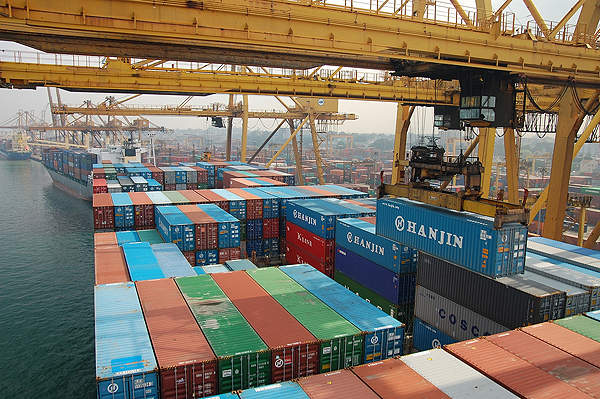The Port of Hambantota, also called Ruhunu Magampura International Port, is a new international ship port being developed in phases in Hambantota, southern Sri Lanka.
The port will be used by ships travelling between the busiest east-west shipping routes that are located at about 10nm from Hambantota.
The Hambantota Port was conceived as early as 1977 but has been delayed. The project is now a part of the Hambantota District development, which also includes an international airport, railway and highway networks, an oil refinery and associated facilities.
Hambantota’s port project is one of the four ports being developed in Sri Lanka to boost the country’s economy and enhance trade.
Importance and purpose of the Sri Lankan port project
The port will occupy an area of 4,000 acres (16km²) and will be the largest of its kind in South Asia. It will have a capacity to accommodate 33 vessels at time.
When fully operational, it will be the world’s largest port built on land and will handle about 20 million TEUs a year. It will also be the second largest port operated by the Sri Lanka Ports Authority in the country (after the Port of Colombo).
The new port is being built to reduce the traffic at the Port of Colombo, which alone handles 6,000 ships a year. Hambantota is close to the Asian and European international shipping routes – the Suez Canal and the Strait of Malacca. These routes through Hambantota are used by about 36,000 ships, including 4,500 oil tankers.
The port saves about three days of sailing time and fuel. It also offers advantages of ship repair, bunkering, food, medical and water supplies, plus logistics support. It is expected to generate about 50,000 direct and indirect jobs.
Completed construction of the first phase of the Port of Hambantota
Construction on the first phase began in January 2008 and it became operational in November 2010.
The first phase of the port involved construction of ship building, bunkering, crew changing and ship repairing facilities. Two breakwaters, dredging of a 210m wide entrance channel, a 600m turning circle, excavation of 17m deep basin area, a 600m general purpose berth, 610m oil quay, a 105m service berth, roads and associated buildings were also constructed.
A joint venture of the Sinohydro Corporation and China Harbour Engineering Company (CHEC) was contracted for the first phase of port construction. SLPA is the project supervision engineer.
The first phase was completed at a cost of $361m. The project was funded by China’s Export-Import Bank (85%) and the Sri Lanka Ports Authority (15%).
Construction of the $76.5m tank farm and bunkering facilities were started in October 2009 and completed in 2011. Han Quin Engineering Construction Company of China was the contractor for the tank farm.
It consists of 14 tanks – eight marine fuel tanks for oil ships, three tanks for LPG storage and three for aviation fuel tanks. A 15-storey port administrative building comprising 100,000ft² space has also been built.
Second phase construction at Ruhunu Magampura International Port
Dredging works for the second phase were started immediately.
The works were slightly delayed due to the presence of a huge rock near the entrance of the harbour, which was blasted at a cost of about $40m. The second phase is expected to be operational in 2014. Costing $810m, it is also financed by the Export – Import Bank of China.
The second phase will be built in three stages. It will include a 2,140m long quay wall to accommodate four 100,000t and two 10,000t wharf berths in the first stage. The second stage will include development of a 50ha offshore artificial island with an elevation of eight metres.
Stage three will include construction of a container oil terminal of 300m long and 17m depth, four 100,000DWT container berths, one 100,000DWT oil wharf and two 30,000 DWT feeder berths.
About 400,000m² of roads and a flyover bridge, a 490,000m² harbour basin and a 60ha of yard area with associated yard handling equipment will also be developed. China Communications Construction (CCCC), the parent company of CHEC, was awarded the second phase contract in January 2011.
Future developments for southern Sri Lanka’s Hambantota Port project
The third phase is expected to be completed by 2023. It will add a dockyard.
A tax-free zone is being set-up near to port area for shipbuilding, repairing and warehousing, with an estimated investment of $550m.
The port area will include cement grinding, storage and bagging facilities, a fertiliser manufacturing, storage and packaging plant, LP Gas distribution facility, a warehousing complex, a vehicle assembling facility, flour mill, a food processing and packaging facility and other associated import-export businesses.

